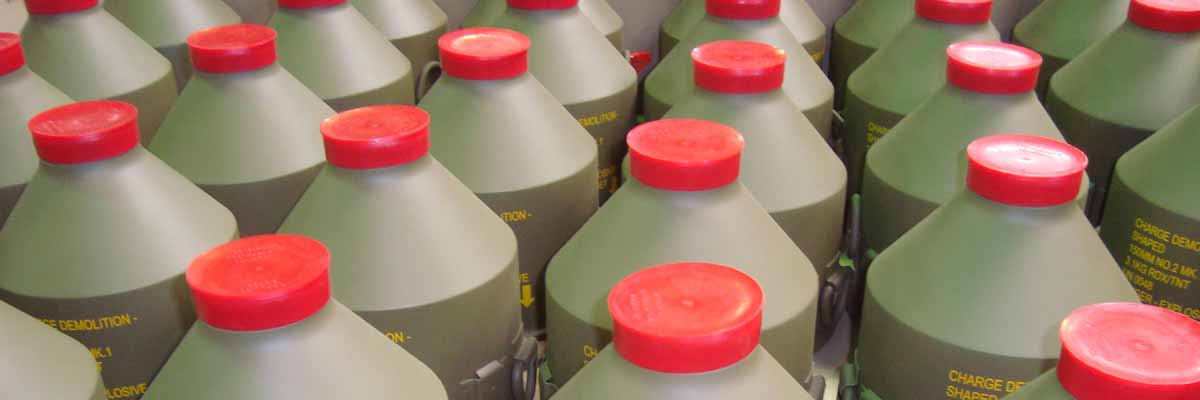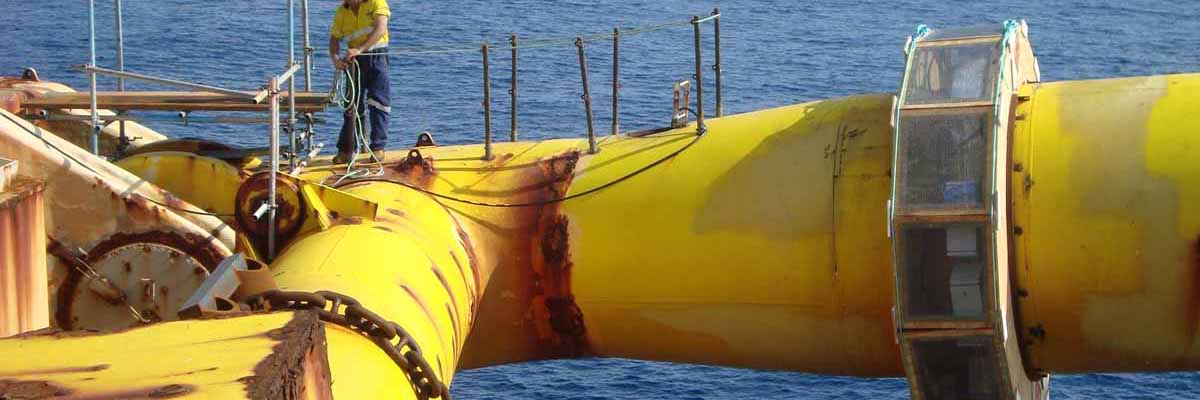Demolition & Salvage – Charge Cutting Linear
 CCL (Charge Cutting Linear) consists of an explosive filling enclosed in a linear metallic sheath of constant cross-section. The cross-section is best described as a chevron, or inverted “V”. As the explosive filling detonates, the action of the shock wave on the chevron casing creates a high-energy linear jet. This jet creation is commonly known as the “Monroe Effect”. The jetting action can cut both metallic and non-metallic materials to significant depths. Jet performance can be tailored by adjusting the casing geometry, wall thickness, explosive type and explosive density. Maximum penetration into a target is then controlled by the stand-off (spacing) between the target and the CCL.
CCL (Charge Cutting Linear) consists of an explosive filling enclosed in a linear metallic sheath of constant cross-section. The cross-section is best described as a chevron, or inverted “V”. As the explosive filling detonates, the action of the shock wave on the chevron casing creates a high-energy linear jet. This jet creation is commonly known as the “Monroe Effect”. The jetting action can cut both metallic and non-metallic materials to significant depths. Jet performance can be tailored by adjusting the casing geometry, wall thickness, explosive type and explosive density. Maximum penetration into a target is then controlled by the stand-off (spacing) between the target and the CCL.
For specific applications trials are usually commissioned. The charge and the stand-off are then tailored to optimally sever the target material, accomodating local job-specific variations such as geometry, welds and structural stress.
Popular applications for CCL include offshore salvage work, Explosive Ordnance Disposal (EOD) and specialist demolition work. The table (below) is a guide to the approximate size charge required for a task





